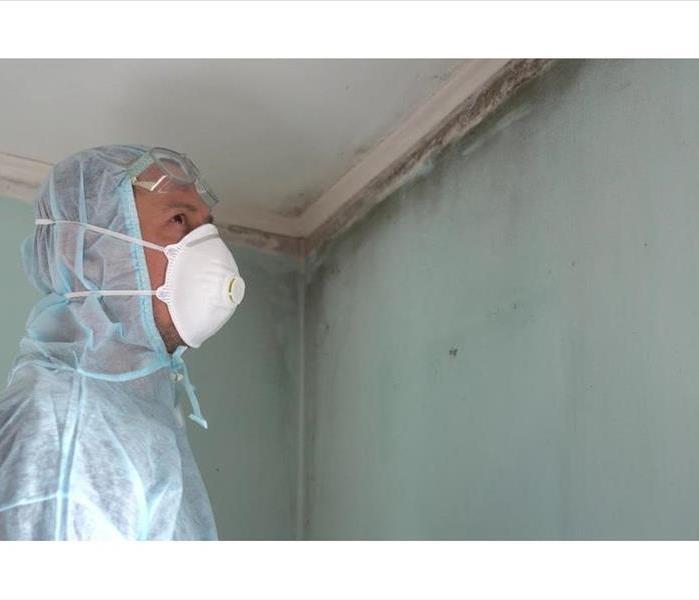What Happens During Mold Remediation?
5/11/2020 (Permalink)
Mold remediation is a process that starts with inspection and assessment and continues through containment, cleaning, and restoration. While some services refer to remediation as mold removal, this terminology is not accurate. Mold spores are everywhere. Stopping active growth and preventing old growth from causing a problem if moisture levels rise are the goals of cleanup.
Damage Assessment
An assessment will identify whether mold is present in a building. Several methods may be used to locate and determine the extent of an infestation:
- Visual inspection
- Inspection tools
- Sample analysis
Visual inspection locates mold that can be found without specialized equipment. A boroscope or infrared imaging technology can reveal mold behind walls. An assessment will also determine the square footage affected by an infestation.
Mold Containment
Containing the contaminated portion of a structure stops spores from spreading. After shutting down the HVAC system, remediation specialists may create negative pressurization and use plastic sheeting to isolate the affected area. Toxigenic infestations, such as some varieties of black mold, require a decontamination chamber.
Structural Cleaning
After a mold problem has been contained, trained professionals can start cleaning. Drywall, cellulose insulation, and other porous building materials may need to be torn out and replaced. The use of EPA-approved fungicides may be necessary for mold removal.
Content Cleaning
Mold also contaminates contents. Durable, non-porous items are easy to disinfect. Porous materials may require more gentle methods. It may be more cost-effective to replace some contaminated items.
Restoration
Replacing building materials that have been torn out is the final stage of mold cleanup. Property owners should consider mold-resistant alternatives to reduce the risk of future infestations.
If water damage has led to mold growth at a commercial property in Leawood, KS, the building owner should arrange for an inspection. Keep in mind that remediation, rather than mold removal, is the only process for managing a mold problem.

 24/7 Emergency Service
24/7 Emergency Service
